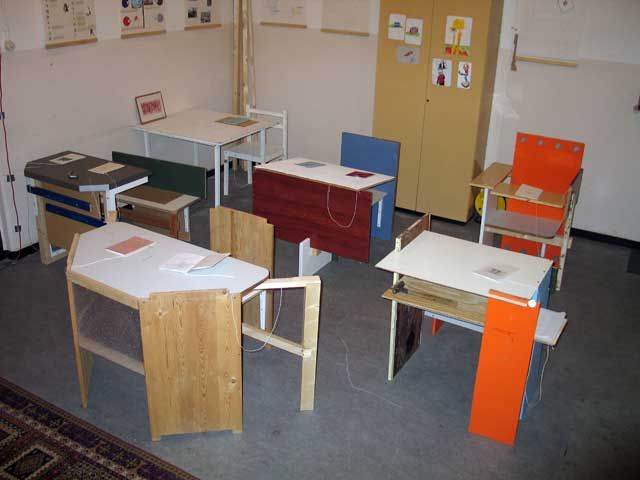
Az "Esperanta sirmejo /Reménység Óvóhely, (1146-H Budapest, Ajtósi Dürer sor 5.)" című kiállítás egy 2004 telén Amszterdamban megrendezett kiállításra* létrehozott environment természetes - a mű és a helyszínek jellegéből adódó - fejlődésen átment változata.
A Liget Galéria is osztályteremmé alakul az Amsterdamban gyűjtött hulladékból készített bútorokkal. A tablók és füzetek képei, szövegei kibővülnek, cserélődnek.
Az amsterdami helyszín eredetileg óvóhely volt egy toronyház pinceszintjén, később számítógépes klubhelység, majd a W139 Galéria ideiglenes kiállítóhelye. Az első címváltozat is részben erre utalt, illetve az eszperantó név eredetére (esperis = reménykedni).

Alább az első változathoz írt terv olvasható:
Shelter of hope / A remény óvóhelye
eszperantó osztályterem:
environment újrafelhasznált hulladékokból megépítve egy egykori óvóhelyen"Az utópiáknak megvan a maguk értéke - semmi sem terjesztheti ki jobban az emberi lehetőségek képzeletbeli horizontját -, de a viselkedés irányítójaként szó szerint végzetesnek bizonyulhatnak. (...) A dolgok nem lehetnek mozdulatlanok (Herakleitosz)" - Szalai Erzsébet
- Egy ad hoc, szükséghelyzetben felállított osztályterem, ahol az ideiglenességhez és a hiányhoz természetes leleményesség társul. (afrikai iskola, iskola háborús övezetben, stb.)
- Az osztályterem padjai és székei utcáról gyűjtött hulladék anyagokból készítve, azonban a klasszikus modernista művészet jellegzetességeivel. (utópia + megvalósulás; ütött-kopott Bauhaus, Stilj)
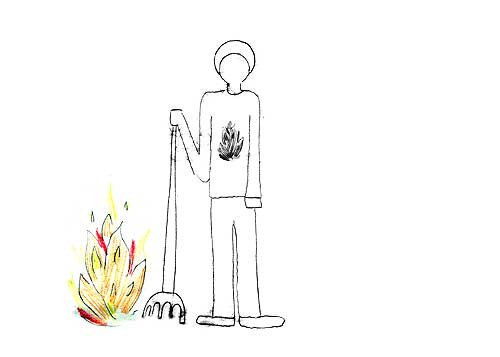
- A falakon tablók, az asztalokon füzetek és a táblán szövegek egy eszperantó nyelvlecke töredékei. A szövegekhez külön szerkesztett kis szótár, kiegészítve az Eszperantót bemutató alapinformációkkal, szervezetek elérhetőségeivel kinyomtatva a látogatók számára elvihető formában.- A nyelvlecke példamondatai (a táblán, tablókon és füzetekben) aktuális társadalmi és ökológiai problémákkal foglalkozó kérdések és javaslatok.
- A tér nem csupán egyirányú propaganda csatorna. Inkább tesz fel kérdéseket, mint traktál kész válaszokat. Szándék, hogy spirituális közösségi térként is funkcionálhasson.
Kaszás Tamás 2004.
*Trawelling Without Moving:
18 december 2004 - 23 januar 2005, W139 in post cs, Amsterdam (NL)
kurátorok: Ann Demeester, Molnár Edit, Somogyi Hajnalka,
művészek: Rosa Barba, Erick Beltran, Attila Csörgő, Sagi Groner, Tibor Gyenis, Hermelinde Hergenhahn, Hendrik-Jan Hunneman, Tamás Kaszás, Jan Kempenaers, Szabolcs Kisspál, Little Warsaw (Andras Gálik, Bálint Havas), Adam Kokesh, Gabriel Lester, Attila Menesi, Thomas Mohr, Elske Neus, János Sugár, Raymond Taudin Chabot, Gyula Várnai, Anne de Vries, Edwin Zwakman.
részletek:http://www.w139.nl/archief//_archive/texts/TRAVELLING_WITHOUT_MOVING.html
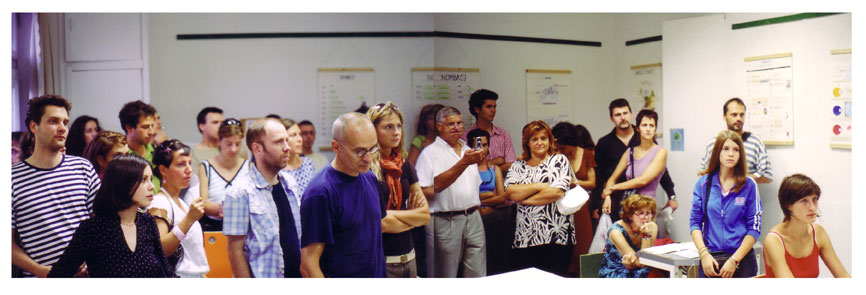
Shelter of HopeThis project was originaly planed and prepared by Kaszas Tamás for the group exhibition called Trawelling without moving in the temporaly space of W139, in Amsterdam at December of 2004.
This environment is an esperanto language classroom made mostly from reused garbage materials from the streets of the town (Amsterdam) installated into a former shelter (temporaly space of W139 Galery) with drawings and esperanto poems by Loránt Aniko
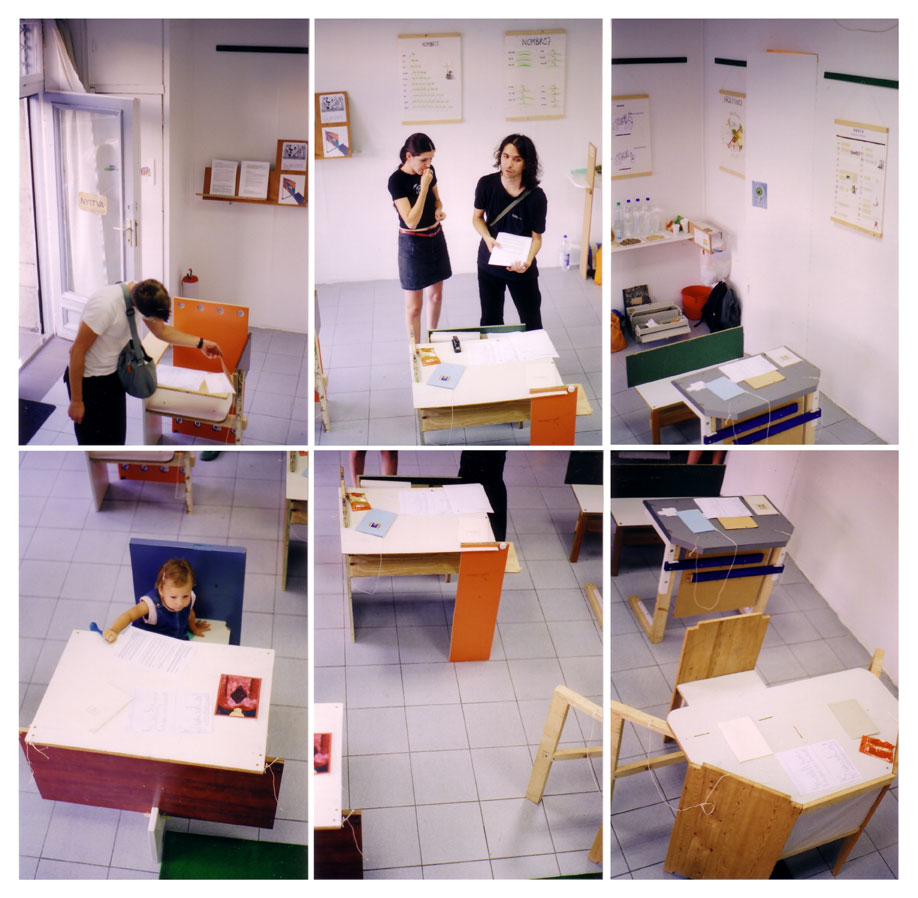
The plan of the project on the Esperanto classroom (was written before the first realisation):
Motto: ’Utopias do have their own value - nothing can widen the imaginary horizon of human possibilities more – but as determinant/guider of behavior it can literally prove to be fatal. (…) Things cannot be motionless.’ (Herakleitos) – in Erzsébet Szalai: On Leftism
1st level: An ad hoc classroom made as if in a case of emergency with its typical set of furniture – set in a corner of the space with at least one brick wall, separated with draughtscreens. (African school, school in war area, etc.)2nd level: The benches and chairs of the classroom fabricated of trash material collected on the streets, however, in a classical modernist style (battered Bauhaus and de Stijl).
3rd level: The tableaus on the walls, the notebooks on the tables, the texts on the blackboard compose a complete Esperanto lesson. The texts and their translations (English/Hungarian/Dutch) can be found on printed sheets to take away, completed with contacts of real Esperanto organizations.
4th level: The sample sentences of the lesson are all questions and answers of social and political problems formulated from a globalization critical, green, anarchist point of view, furthermore, they are related to the nature of Utopia completed with certain spiritual contents linked to it.
5th level: The illustrations of the sample sentences on the tableaus explaining the grammar are also related to the topics described above. The montage-like pictures can be either my works or they can come from related art historical tendencies (e.g. Russian avant-garde), and from the imagery of contemporary anarchist, globalization critical, alternative media.
Principally, the project deals with the tension between Utopia and its realization. Upon my intention i mean, but obviously, it will run out of my hands. Probably it already has.

a critic from a dalypaper:
004.12. W139, Amsterdam (NL) - Trawelling without moving"(...)
What particularly manages to impress in the case of this group of Hungarian artists is their feather-light social commitment that
transcends cultural boundaries. Sagi Groner, Tibor Gyenis and Tamás Kaszás are not obsessively concerned with their own traumatic history, as is the case with their Eastern European colleagues a few floors up in the Stedelijk Museum. They rather choose to tackle universal problems.
(...)
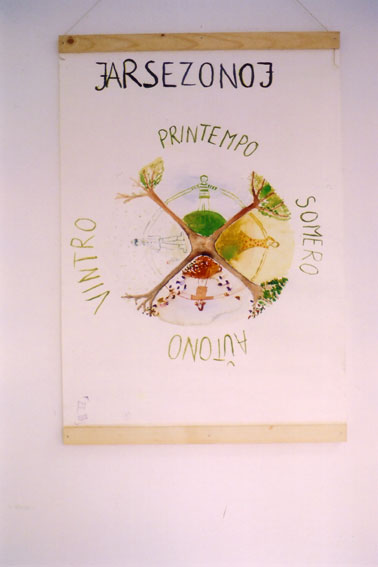
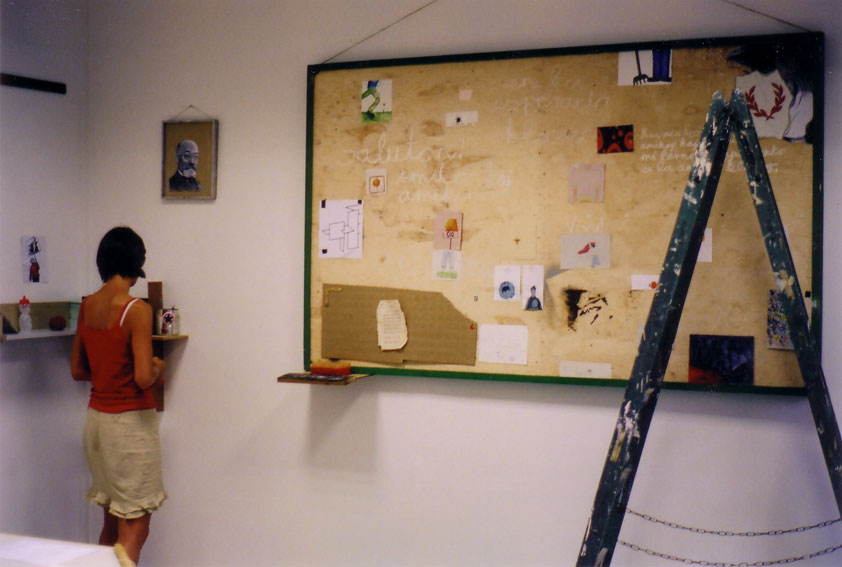
Kaszás dwells on the bankruptcy of all grand ideals.
In doing so, the artists do not resort to dry, moralizing nagging - their commitment is playful and, thanks to the on-site production, pervaded with ‘couleur locale’.
(...)
That this show’s art is not so much concerned with an initial idea as it is with pleasure of creation becomes apparent from looking at Shelter of Hope by Tamás Kaszás. The artist has furnished a classroom with Rietveld tables and chairs fabricated from waste material, and in doing so plays up the bankruptcy of all manner of ideals, from Esperanto to communism to capitalism.
For a moment, the visitor thinks he has landed in the gloom of an installation by Kabakov, an effect that is enhanced by the series of claustrophobic bathroom cells that hide the classroom from view. But Kaszás does not wallow in the misery. His chairs and tables and the dreamy, fragile children’s drawings (by Lorant Aniko) on each desk are a tribute to autonomy and imagination.
(…)"Marina de Vries